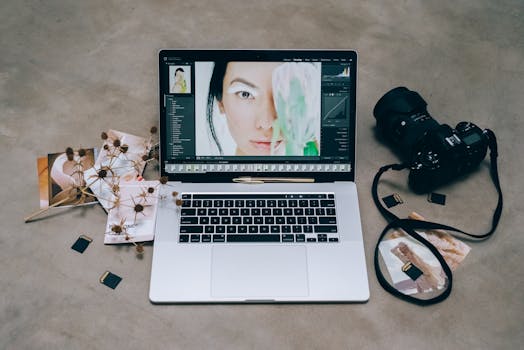How to Use Lightroom Presets
Editing templates can transform your photo editing process, making it quicker and more efficient. Whether you're a professional photographer or a hobbyist, understanding how to use these presets can significantly enhance your workflow. Editing templates are pre-configured settings applied to photos to achieve a specific look or style with just one click. They save time by automating repetitive tasks and ensuring consistency across your images.

Using Editing templates is like having a toolbox full of ready-to-use enhancements for your photos. They can correct exposure, adjust colors, add creative effects, and more. Instead of manually tweaking each photo, you can apply a preset and then make minor adjustments as needed. This approach not only speeds up the editing process but also helps in maintaining a uniform style across your portfolio.
Moreover, Editing templates are highly customizable. You can create your own presets from scratch or modify existing ones to suit your preferences. This flexibility makes them invaluable for photographers who want to develop a signature style or those working on projects that require a consistent look. In this article, we'll explore how to use Editing templates effectively, from installation to customization.
Installing Lightroom Presets
Before you can start using presets, you need to install them in Lightroom. The process is straightforward:
- Download the preset files from a reputable source.
- Open Lightroom and navigate to the Develop module.
- In the Presets panel on the left, click the plus icon (+) and select "Import Presets."
- Locate the downloaded preset files on your computer and select them.
- Click "Import" to add the presets to your library.
Once installed, the presets will be available in the Presets panel for immediate use.
Applying Presets to Photos
Applying a preset is simple:
- Select the photo you want to edit in the Library module.
- Switch to the Develop module.
- In the Presets panel, click on the preset you wish to apply.
The preset's settings will automatically be applied to your photo. You can then tweak individual settings if needed to perfect the image.
Customizing Presets
Presets are versatile tools that can be customized to better suit your needs:
- Edit Existing Presets: Apply a preset to a photo and adjust its settings. Once satisfied, right-click on the preset and choose "Update with Current Settings."
- Create New Presets: Adjust settings manually in the Develop module, then click the plus icon (+) in the Presets panel and select "Create Preset." Name your preset and save it for future use.
Organizing Your Presets
A well-organized preset library makes it easier to find and apply the right presets quickly:
- Create Folders: In the Presets panel, right-click and select "New Folder." Name it appropriately (e.g., "Portraits," "Landscapes").
- Categorize Presets: Drag and drop presets into their respective folders for easy access.
The Benefits of Using Lightroom Presets
The advantages of using Editing templates are numerous:
- Consistency: Ensures a uniform look across multiple photos.
- Efficiency: Saves time by reducing repetitive tasks.
- Creativity: Allows for experimentation with different styles without manual adjustments.
A Few Popular Lightroom Preset Providers
| Provider | Description | Website |
|---|---|---|
| Mastin Labs | Mastin Labs offers film emulation presets that replicate classic film stocks' look and feel. | mastinlabs.com |
| Sleeklens | Sleeklens provides a wide range of presets tailored for different photography styles such as portraits and landscapes. | sleeklens.com |
| VSCO | VSCO offers presets that cater to both mobile and desktop users, known for their unique and trendy looks. | vsco.co |
Troubleshooting Common Issues
If you encounter issues while using Editing templates, here are some common solutions:
- Preset Not Appearing: Ensure you've imported it correctly by checking the file format (usually .xmp or .lrtemplate).
- Preset Looks Different on Your Photo: Different lighting conditions or camera settings may affect how a preset looks. Adjust exposure or white balance as needed.
- Preset Overwrites Desired Settings: Customize the preset by updating it with your preferred settings as described earlier.
Photo Editing with Presets
The use of Editing templates continues to improve with advancements in AI technology. Adobe recently introduced AI-powered features like Enhance Details, which work seamlessly with existing presets. This integration allows photographers to achieve even higher quality edits without additional effort. As technology progresses, we can expect even more sophisticated tools that will further simplify photo editing while maintaining high standards of quality and creativity.
Mastering Editing templates can elevate your photography by streamlining your editing process and ensuring consistency across your work. By installing, applying, customizing, and organizing these powerful tools, you can unlock new levels of efficiency and creativity in your photo editing workflow.